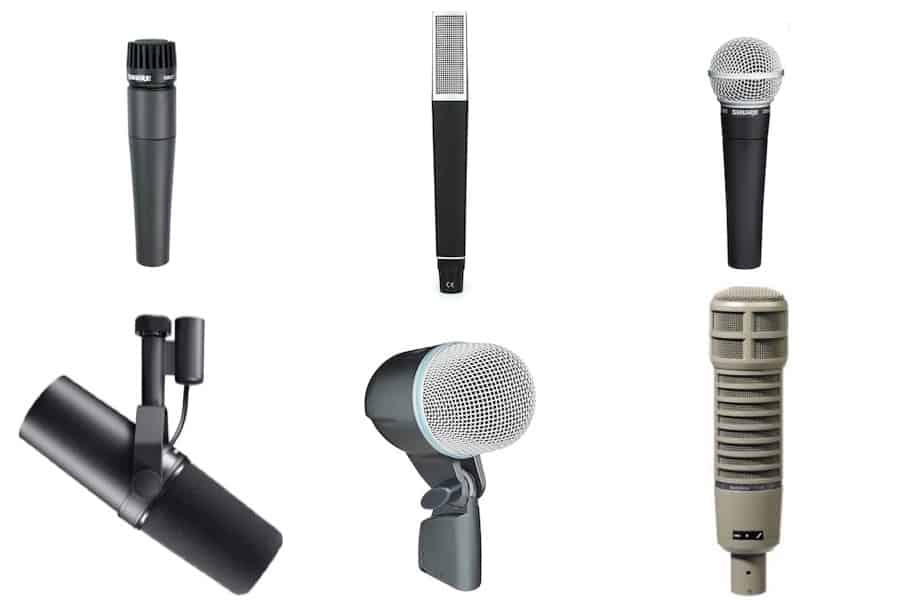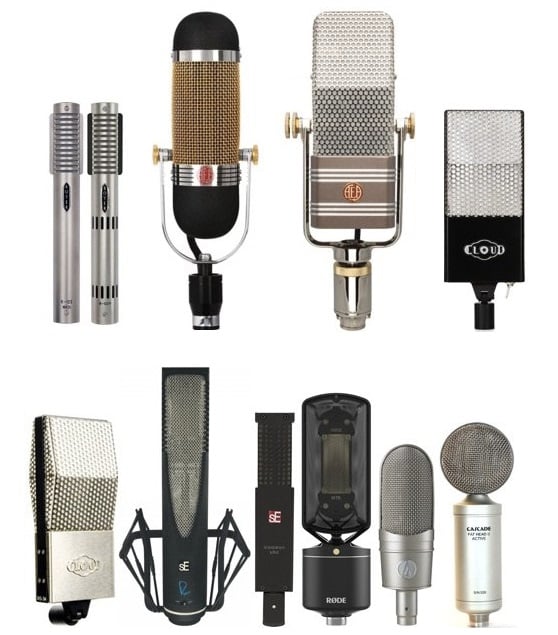Something Powerful
The Basics of Audio
Following on from the first issue, here is a deeper look into choosing the right mic based on their advantages and disadvantages. As well as microphone directionality, which is also a fairly important factor in choosing the correct microphone for the job.
Moving-coil microphones are generally much cheaper and durable than their condenser and ribbon counterparts, as their moving parts are larger and less prone to breaking. However, the sacrifice made is in the range, detail and volume of sounds that the mic can capture. This may not be an issue however, as perfect acoustics are not always necessary or even possible for things such as on-site interviews or concerts. In these sorts of scenarios, where a durable mic may be more suitable, spending the extra money on a condenser or ribbon mic may be a waste.

Image Source: https://mynewmicrophone.com/the-complete-guide-to-moving-coil-dynamic-microphones/

Image Source: https://www.micreviews.com/guides/top-10-best-condenser-microphones
Condenser microphones are more expensive, but their moving plates are lighter and more compact, which enables them to record a greater range of frequencies and fit into smaller housing. However, most of the drawbacks in condenser microphones lie in the way they capture sound – electrostatic. To function, they require ‘phantom power’ and the device they are plugged into must be able to provide it. Additionally, electrostatic is very vulnerable to extreme heat and humidity, which can break the mic and cause it to create passive noise from the very electronics it uses to record sound. This sensitivity means they can also be damaged by high sound pressures that wouldn’t phase a moving-coil microphone of a similar quality. These microphones are best used for quiet talking, such as those from podcasts, even if they require a ‘pop filter’ to guarantee silky smooth vocals.
In comparison, ribbon microphones are generally superior to the other two , in terms of professional recording, as they can record many acoustic instruments with the highest accuracy and quality of the three types, even able to record multiple instruments at the same time while giving every single frequency the attention it needs. However, quality comes with a price and ribbon microphones tend to push the boundaries. Once more, these microphones are also fairly delicate when compared with moving-coil mics, however, as long as they are kept out of line of direct, sharp air pressure changes, they can be kept in pristine condition. A simple test is to put your hand in front of the instrument, such as a bass drum, that’s playing the desired recording and move your hand away until you can’t feel the change in air pressure. Wherever your hand ends up is likely an ideal location for a ribbon mic.

Image Source: https://mynewmicrophone.com/top-11-best-active-ribbon-microphones-on-the-market/
Omni-directional
Another thing to consider with microphones is direction. Most microphones are simply omni-directional and pick up sound from all sides equally, however in some situations (such as a busy place with lots of unwanted background sound) this may not be ideal, and a directional microphone may be more suitable.
Bi-directional
Bi-directional/Figure-of-8 microphones are better at picking up sounds from the front and behind the mic and are not as strong when picking up sounds from the sides. Therefore, they may be better for on-site interviews in a noisy environment or a podcast where both performers are sitting opposite each other.
Uni-directional
Uni-directional/Cardioid microphones pick up sound from in front of (and slightly to the sides) of the microphone, which makes them better for stage vocals, or situations where you’d want every performer to have their own microphone and the ability to control how their individual vocals sound.
Hypercardioid
Hypercardioid microphones have a much tighter front pick up range, when compared to cardoid mics, however there is a small pick-up behind the microphone, so unwanted sounds must be placed to the sides. This microphone is great for louder stage vocals, such as those in concerts, as the side pick-ups of a cardioid mic could cause feedback.

Image edited from: https://www.martinjaroszewicz.com/spatial_audio/s8
To summarise, for on-site environments, moving-coil microphones with either unidirectional or bidirectional functions is likely the best, to tune out the background noise and survive noisy or rugged environments. For podcast vocals or acoustic instruments, condenser is the best option, as it can capture a better range of frequencies. Finally, ribbon microphones, whereas expensive, certainly have their purpose for recording the highest quality sounds of the three types and with the ability to record an entire room of instruments, their usefulness cannot be understated.
